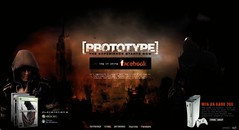
Really nice work from Virgin America and Goolge - use google apps to solve the problems and gain altitude. And it's hard!
http://www.dayinthecloud.com/#

 For many young people, the mobile phone is a status symbol and an extension of identity. For aspirational young kids and tweens, this is no different. For them, getting a phone is a rite of passage, and the age at which this happens is getting younger and younger. According to Nielsen Mobile, the average age a kid starts using a borrowed cell phone is 8.6, and they typically get their own at 10.1.
For many young people, the mobile phone is a status symbol and an extension of identity. For aspirational young kids and tweens, this is no different. For them, getting a phone is a rite of passage, and the age at which this happens is getting younger and younger. According to Nielsen Mobile, the average age a kid starts using a borrowed cell phone is 8.6, and they typically get their own at 10.1.
However, most handset manufacturers don’t cater this this market — only recently shifting their adult-centric view. Parents may also be relutant to pass back their new iPhone (though we’re seeing this as well). This has opened up a market for special mobile devices just for kids. Here are some of the players:
So what does this mobile mania for pre-teens mean? Some are concerned. In France, there are even new laws in the works that crack down on children’s use of mobile phones. Advertising these devices to children under 12 will be prohibited under the legislation and steps will be taken to ban the sale of any phone designed to be used by kids under six years old.
However, if the trend we’re seing in youth adoption continues, pacifiers will soon come with keypads. If nothing else, we’re breeding a tech savvy generation who will be the next wave in mobile innovators.
Remember early Jib Jab cartoons where you’d manually upload your own photo and that of your friends? Now, it’s much easier with just a few clicks to Facebook Connect.
Last week, I had dinner with Chris Pan (linkedin, twitter), Head of Brand Solutions at Facebook, who pointed me to a new social interactive marketing advertisement for a video game called “Prototype”. Upon accessing the site, Prototype Experience, (try it for yourself) you’ll be prompted to login with your Facebook account. After a rather lengthy loading period (it’s worth it, hang tight) you’ll watch a short teaser trailer.
This isn’t a normal trailer, as it uses your own social information in Facebook from your profile picture, your profile information, and photos from your friends. Here’s what I saw, see screenshots below.
What’s going on here? This is an example of more contextual ads based off social profiles, which is a trend as you can see my coverage of VW’s Twitter and Facebook campaign). These are early examples of the era of Social Context, where content, media, and ads will be personalized in the future based off your social information, learn more about this in the future of the social web.


Above Image: Promo video includes my profile pictures –making things a bit more interesting and personalized. As this evolves, imagine how your face and profile info will populate other experiences and content –we’re instinctively drawn to look at ourselves.

Above Image: “Is that me?” Yes it is, this promo video includes information from my profile –I’m right in the game. In consideration of my friends, I didn’t include their photos –which you’ll see in your own trailer video. Expect future ads where friends ‘promote’ or even sponsor content –some opt-in, some not.

Above Image: Participants are ‘hooked’ into the registration form in order to win in the sweetstakes, a good example of gathering leads from an engaged audience. Facebook isn’t a great way to generate leads, while you can get users to be ‘fans’ of your Facebook page, getting their true identity and email is often limited –as dictated by their Terms of Service.

Above Image: The participants are encouraged to share the campaign with their Facebook or Twitter friends, thus staring a “Viral Loop”. It spreads.